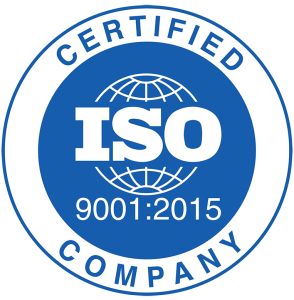We are a specialist tubing provider capable of handling any order with speed and accuracy. For years, we have been supplying the best ERW steel tubes West Midlands has to offer. They come in more than 200 sizes and several different shapes. Also, we have a steel cutting and processing service to provide unique lengths.
When you must cut metal to size, whether it is a sheet, bar, or tubing, there are various cutting procedures to pick from. But, not every process is appropriate for each metal type or job. A method such as waterjet, plasma, or flame cutting could be preferable for your work. Yet, it is essential that you know the differences between all three. This is what we will be going over here.
Flame cutting
This is a thermal cutting operation that makes use of a fuel source and oxygen to generate a flame. It is going to have sufficient energy to melt and sever material. The use of fuel and oxygen here is why people often call it “oxyfuel cutting” too.
The technique makes use of a neutral flame to heat the substance up to its kindling temperature. When you reach that, the operator presses a lever to release an extra high-flowing oxygen stream to the flame. The purpose is to sever the material and blow the dross or molten metal away.
The pros and cons
 Flame cutting has the benefit of being highly portable, since you don’t need power supplies. A striker, a torch, hoses, a cylinder for fuel gas, and an oxygen cylinder are all you need. This makes it a wonderful option for field work.
Flame cutting has the benefit of being highly portable, since you don’t need power supplies. A striker, a torch, hoses, a cylinder for fuel gas, and an oxygen cylinder are all you need. This makes it a wonderful option for field work.
Another flame cutting advantage is that you can cut extremely thick metals. With the right gas flows and equipment, you can cut steel that is several feet thick. Furthermore, the equipment costs are low.
Saying this, flame cutting is at a disadvantage when it comes to the material types you can cut. Usually, it is restricted to cast irons, low alloy steels, and carbon steel. Most other material variants won’t produce clean cuts. Not to mention, it is slower than the other two methods. If you need bespoke ERW steel tubes West Midlands has nobody better to provide them than us.
Thanks to the heat here, the metal edges can frequently produce a brittle and thin layer of solid material. This is known as the decarburised layer. Depending on the application, you might need to remove it. The area close to the decarburised layer could also be changed thanks to the heat. It may therefore have different properties.
Plasma cutting
Here we have a different thermal cutting operation. Rather than a flame though, it employs an electrical arc. That heats and ionises gas to produce plasma and a tungsten electrode produces the arc to cut the material. As for the workpiece, it is created to be part of the electrical circuit with the torch. This happens by using a grounding clamp.
You can use a host of gases for the plasma gas. The one to go with will depend on the material you are cutting.
Advantages and drawbacks
Plasma cutting can generate high calibre cuts more quickly than flame cutting. Also, the kerf of certain systems can be far smaller as well.
Another fact is that you can use it on most metals that conduct electricity well. In other words, there are fewer restrictions and you can work with more materials than flame cutting. You can use it for stainless steels, titanium, copper, aluminium, and more. This is an easy process to automate too.
On the other side, plasma cutting is incapable of working with materials as thick as the ones cut via flame. Usually, it isn’t preferable for materials over a few inches thick. Please speak to us if you desire the finest ERW steel tubes West Midlands has.
Waterjet cutting
This is a mechanical cutting technique. It makes use of high pressure, high speed streams of water to cut material. Sometimes, there are substances that are harder to cut. For them, you can introduce an abrasive to the water to enhance its cutting ability and travel speeds.
Benefits and potential flaws
Waterjet cutting has the capacity to cut various material types, not just metal. Furthermore, it is far cleaner than flame or plasma since it does not emit dangerous fumes.
Additionally, this isn’t a thermal procedure. The water actually cools the material when it cuts. As a result, there isn’t any heat that can influence the cut area’s chemical and mechanical properties.
What’s more, you can pair this with automation. That can speed up lead times.
A disadvantage is that waterjet isn’t appropriate for deep cuts on harder metals. Metals like these can reduce the cut speed and the quality. The equipment also costs a pretty penny, and needs a lot of maintenance.
Start doing business with us for the best ERW steel tubes in the West Midlands
At Union Steel Tubes, thanks to our wide selection of products and our cutting service, we are confident we can cover all requirements. We want nothing but the best for our customers too. Therefore, we also subject every tube to extensive testing. After we confirm they are good to go, we send them off using our quick delivery service.
So, if you would like to use the greatest ERW steel tubes West Midlands has available, contact us today. We can suggest the right products if you need advice.


